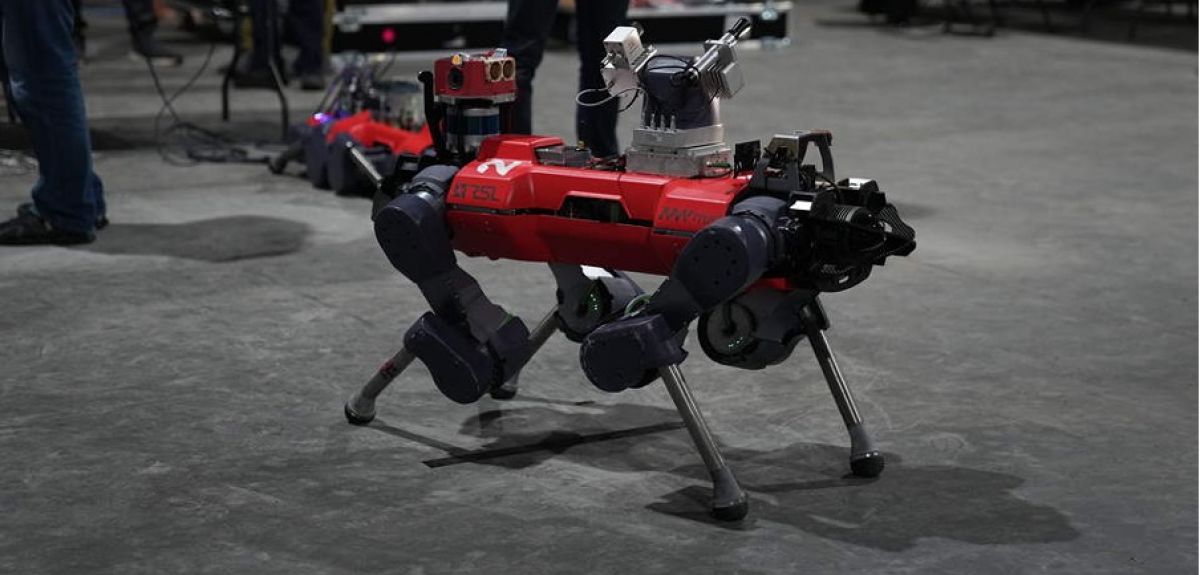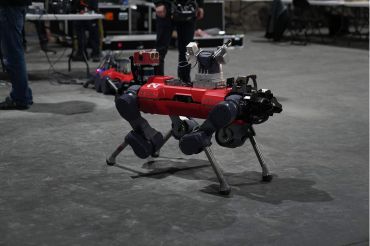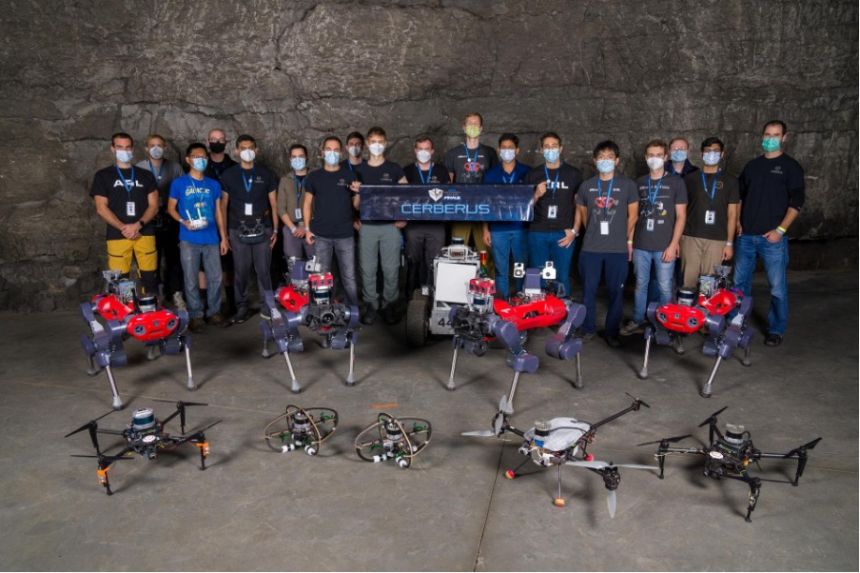
Robotics Researchers Win Prestigious International Exploration Challenge
Robotics researchers from the Oxford University's Robotics Institute have contributed to the winning team, Team CERBERUS, at the DARPA Subterranean Challenge - coming away with the top prize of $2m. The finals of the competition concluded on Friday in an underground cavern in Louisville, Kentucky with 8 international teams going head-to-head.
Underground settings present significant challenges for civilian first responders, with unknow hazards and conditions that can vary drastically or change quickly. The DARPA Subterranean or "SubT" Challenge was established to stimulate new approaches to rapidly map, navigate, and search underground environments during time-sensitive disaster response scenarios.
'The DARPA Subterranean or "SubT" Challenge was established to stimulate new approaches to rapidly map, navigate, and search underground environments during time-sensitive disaster response scenarios.' Prof. Maurice Fallon, leader of Oxford University team
The challenge took place over three years and was designed to push the boundaries of autonomous robotic technology. The task was to explore an underground environment and to locate objects such as mannequins - simulating injured humans, - backpacks, phones and tools.
‘We are delighted to have done so well. Contributing to CERBERUS has really accelerated our research. After 3 years of preparation, it was fantastic to test it in the DARPA’s complex underground maze’. Said Prof. Maurice Fallon, lead of the Oxford University team.
Points were awarded when an object was correctly located. Challenges included locomotion over rough terrain, accurate mapping, and coordination of the robot team by a single operator from outside the test location. The test location blended aspects of cave, tunnel and urban subways and was often unlit, filled with smoke or on a steep slope.
CERBERUS*, deployed a team of four quadruped robots, called ANYmals, as well as autonomous aerial vehicles in the competition organized by the US Government research agency DARPA.
 An ANYbotics ANYmal C robot from Team Cerberus being prepared for the competition in Louisville, Kentucky. Photo Credit: DARPA
An ANYbotics ANYmal C robot from Team Cerberus being prepared for the competition in Louisville, Kentucky. Photo Credit: DARPA‘In the underground environment there are so many challenges from lighting and communications to the slipperiness of terrain itself. This demanded a whole range of breakthroughs by our team’. Said Dr. Marco Camurri, Senior researcher, Oxford University.
In the end CERBERUS tied with a team from CSIRO - a research lab based in Brisbane, Australia - winning only on a tiebreaker. Other teams included representatives from top universities such as University of Colorado, Boulder (in 3rd place), Carnegie Mellon University, Massachusetts Institute of Technology (MIT) and Jet Propulsion Laboratory (part of NASA).
It is envisaged that the technologies will impact on disaster response, environmental monitoring, industrial inspection, and construction sectors.
The CERBERUS team included University of Nevada, Reno; Norwegian University of Science and Technology; the Swiss Federal Institute of Technology, Zurich; University of California, Berkeley and University of Oxford as well as two companies Flyability and Sierra Nevada Corporation. The team was led by Prof. Dr. Kostas Alexis from NTNU. The team leadership also involved Prof. Dr. Marco Hutter (Robotic Systems Lab, ETH Zurich), Prof. Dr. Roland Siegwart (Autonomous Systems Lab, ETH Zurich), Prof. Dr. Mark Mueller (UC Berkeley), Prof. Maurice Fallon (Oxford Robotics Institute), Adrien Briod (Flyability) and Prof. Dr. Eelke Folmer (UNR).
Oxford University sponsors included the ORCA Hub - funded by the Industry Strategy Challenge Fund and EPSRC, the Royal Society and the EU Horizon 2020 projects THING and MEMMO.
 Team Cerberus with their team of ANYmal legged robots and autonomous aerial vehicles before the DARPA Subterranean Challenge in Louisville, Kentucky. Photo Credit: DARPA
Team Cerberus with their team of ANYmal legged robots and autonomous aerial vehicles before the DARPA Subterranean Challenge in Louisville, Kentucky. Photo Credit: DARPA Expert Comment: Chatbot-driven sexual abuse? The Grok case is just the tip of the iceberg
Expert Comment: Chatbot-driven sexual abuse? The Grok case is just the tip of the iceberg
 New study finds that stopping weight-loss drugs is linked to faster regain than ending diet programmes
New study finds that stopping weight-loss drugs is linked to faster regain than ending diet programmes